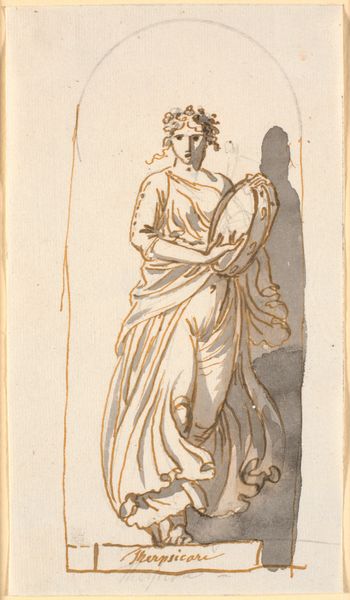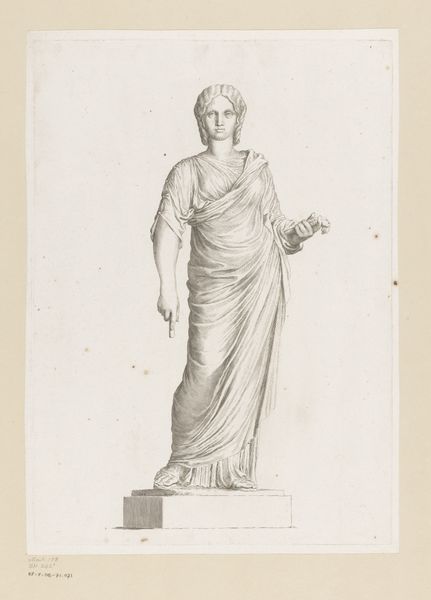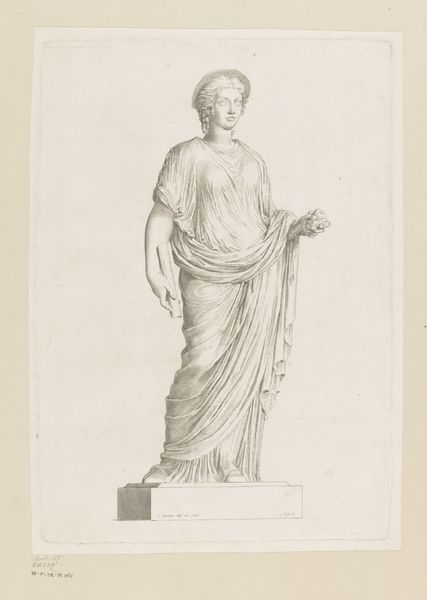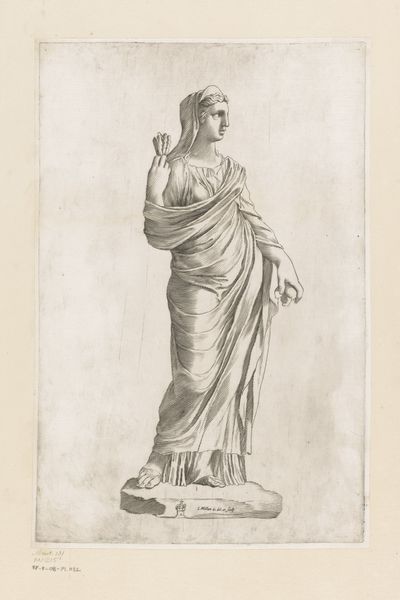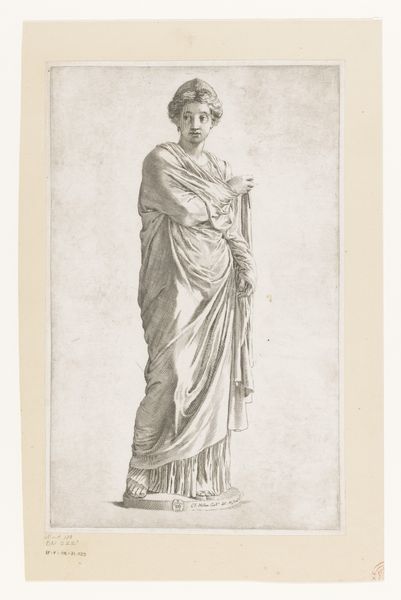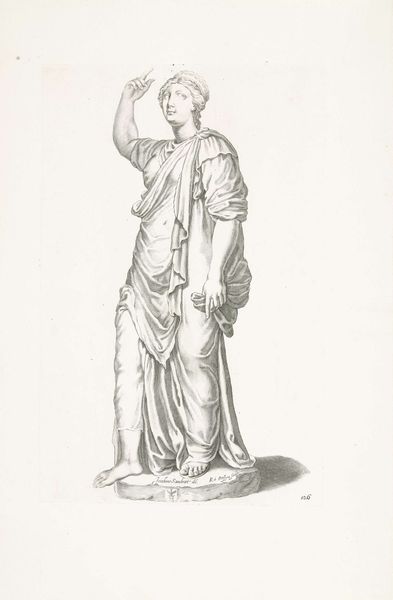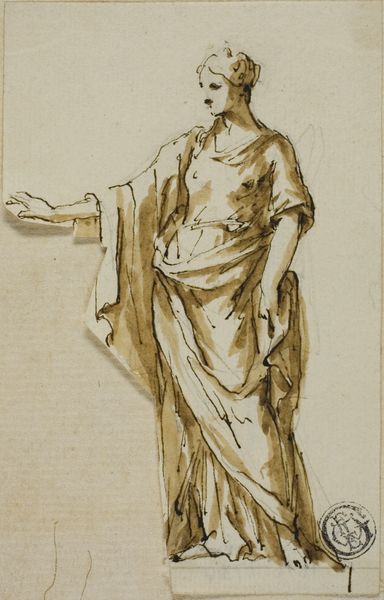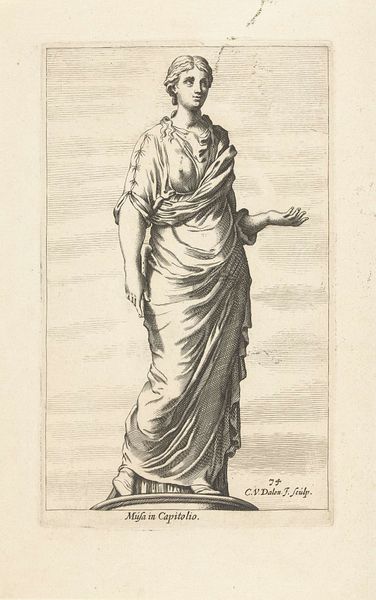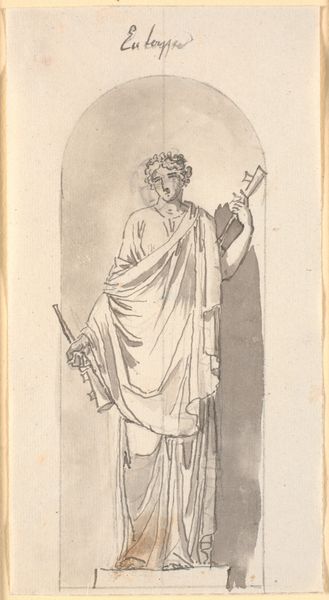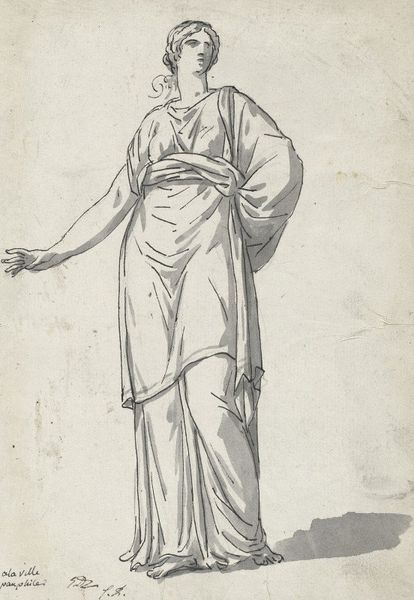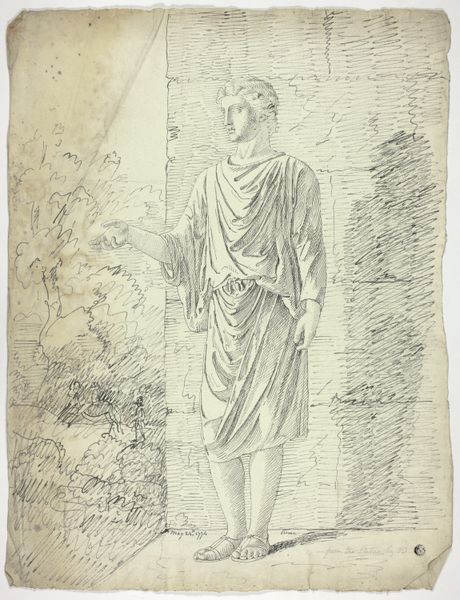
drawing, watercolor
#
portrait
#
drawing
#
neoclacissism
#
greek-and-roman-art
#
figuration
#
watercolor
#
history-painting
#
watercolor
Dimensions: 202 mm (height) x 115 mm (width) (bladmaal)
Curator: Here we have "Clio som statue i en niche," which translates to "Clio as a statue in a niche," a watercolor drawing by Nicolai Abildgaard, made sometime between 1743 and 1809. It resides here at the Statens Museum for Kunst. Editor: It’s interesting how the drawing itself resembles a classical statue, in terms of palette and shading, but also the use of architectural elements, making it seem like a study or copy. Curator: Absolutely. Abildgaard was a leading proponent of Neoclassicism in Denmark. Here, he's depicting Clio, the Greek muse of history. The use of watercolor is quite fitting, isn’t it? It’s a medium often associated with preparatory sketches, emphasizing the classical devotion to capturing ancient forms for further inspiration and imitation. Editor: The way she holds the scroll and what looks like a stylus speaks volumes about how history was being conceptualized at the time, too. Less about lived experience, more about a static text that's authored and imposed. You can almost hear the echoes of power and patriarchy in the silent niche she occupies. Curator: And that niche situates her as a fixed object, a source of inspiration to be consumed. These artists really studied and absorbed antique aesthetic ideals from Greek and Roman art, even taking grand tours. They saw it as their job to translate these forms for a contemporary audience and contemporary power structures. Editor: Exactly. And it’s important to consider who was allowed access to Clio’s wisdom back then. Museums, academies, these were spaces largely dominated by elite white men, reinforcing a particular, exclusionary narrative of history itself. Who gets to write it? Who gets remembered? Curator: A perspective so pertinent, even now. This drawing really makes you contemplate how deeply rooted these historical and cultural ideas are within our institutions. Editor: Yes, thinking about how we interpret art in light of its historic production is crucial in shaping contemporary values. Hopefully this also means questioning established norms, and amplifying underrepresented voices.
Comments
No comments
Be the first to comment and join the conversation on the ultimate creative platform.
